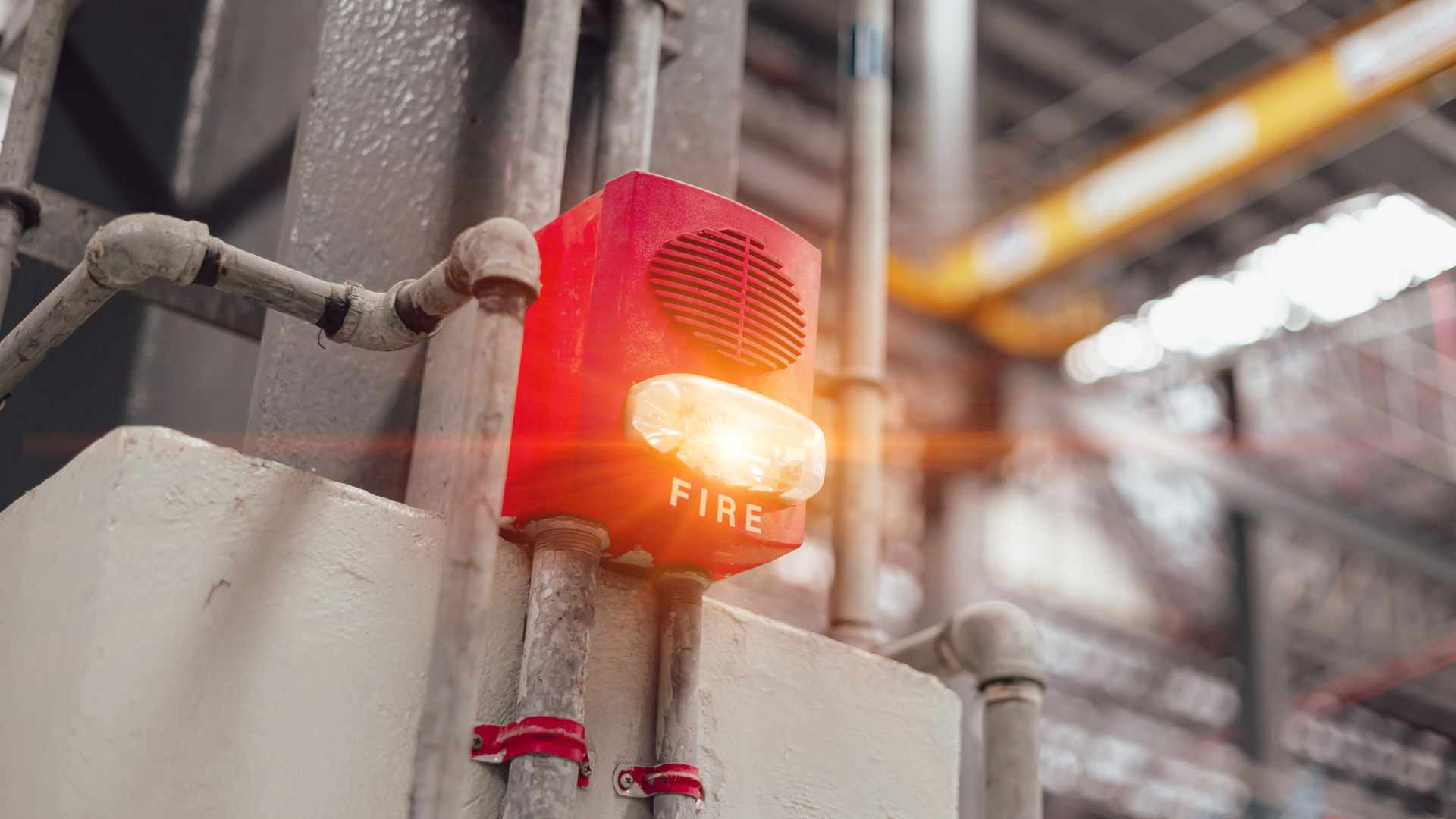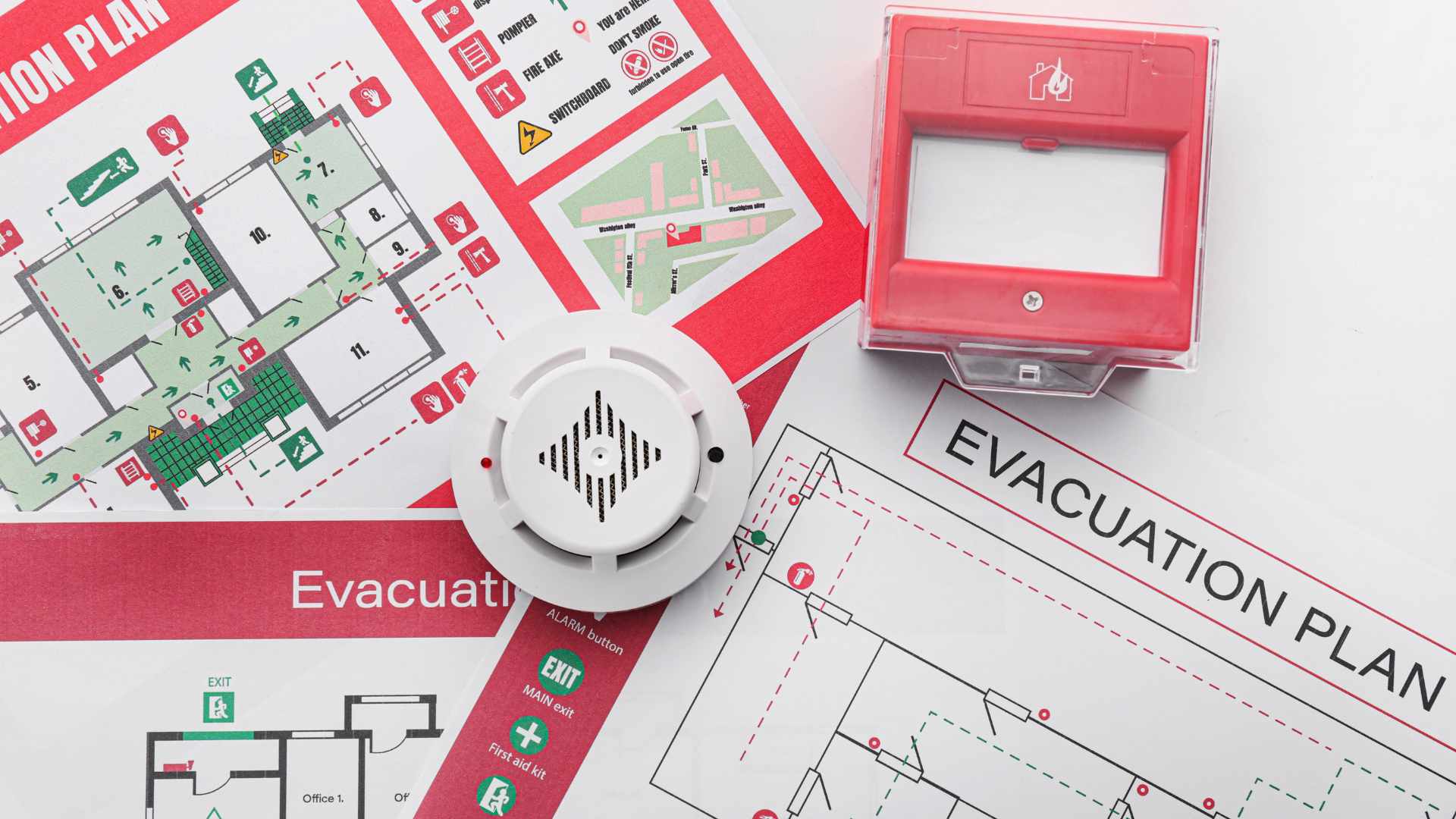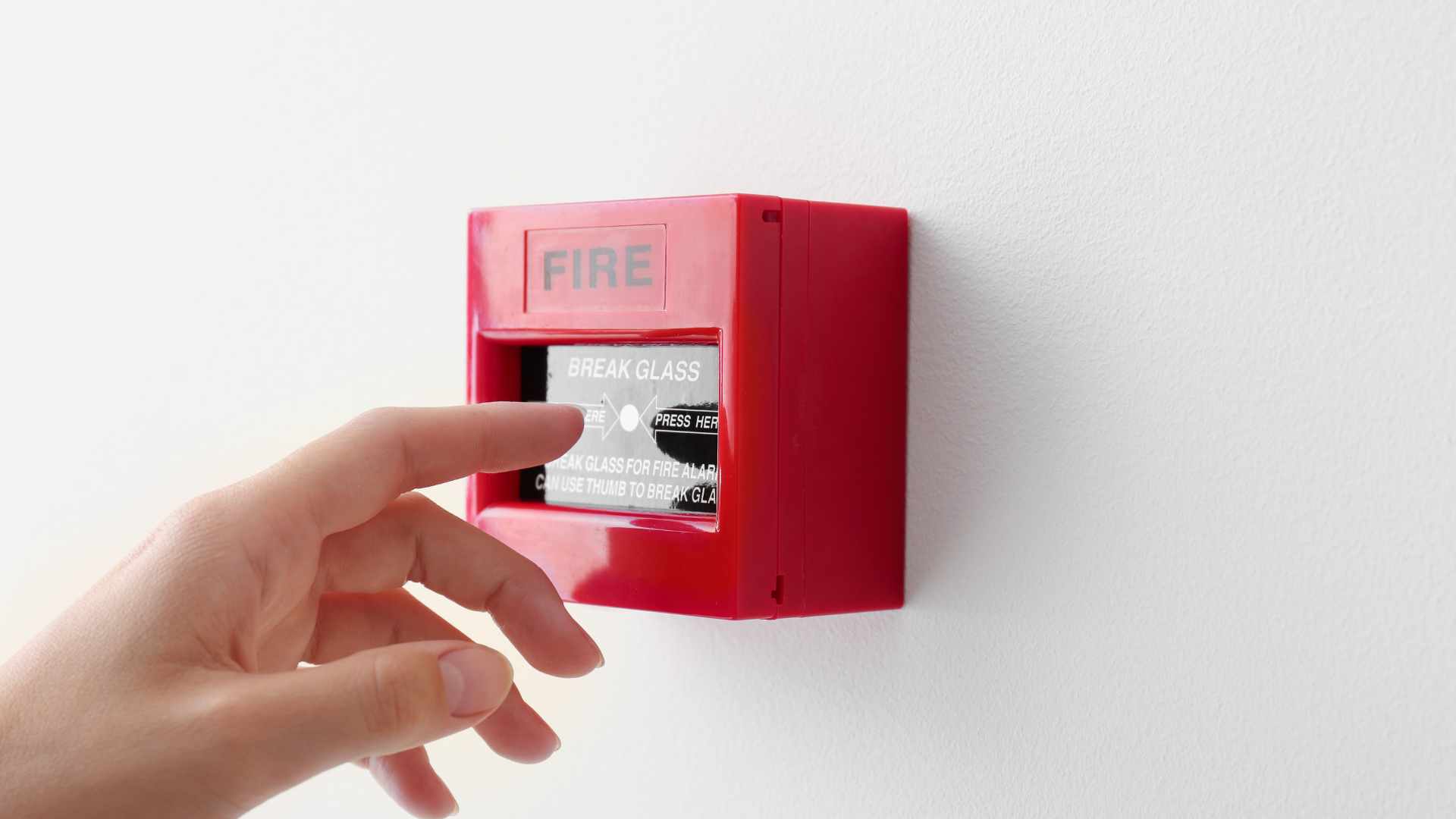The role of automated security systems has expanded far beyond traditional surveillance. Among the critical enhancements are their capabilities in detecting fire and carbon monoxide (CO), offering a new layer of protection that is both proactive and efficient.
Automated security systems now incorporate advanced sensors and algorithms to continuously monitor for fire and CO, providing early warnings and immediate responses that can save lives and property. By understanding how these systems function and their benefits, you can better appreciate the importance of integrating such technology into your home or business.
Automated security systems present a comprehensive approach to modern safety. From ensuring early detection and reducing response times to offering remote monitoring and integrating with other smart home devices, they can be a game-changer in fire and carbon monoxide detection, enhancing your peace of mind and security. Read on to explore how these systems can enhance your peace of mind and security.
The Importance of Fire and Carbon Monoxide Detection
Fire and carbon monoxide detectors are indispensable tools in safeguarding lives and properties. Their early warning capabilities are critical in preventing tragedies and minimising damage. By ensuring proper installation, regular maintenance, and compliance with safety regulations, you can create a safer environment for your family and colleagues. Prioritise the installation of these life-saving devices and invest in regular maintenance to reap their full benefits.
Fire and carbon monoxide detectors are essential safety devices designed to protect lives and property by providing early warnings of fire and dangerous levels of carbon monoxide (CO). Understanding their significance and ensuring their proper installation and maintenance can greatly enhance safety in homes and businesses.
Fire Detection Systems
Benefits of Fire Detection Systems
- Early Warning: Fire detection systems can identify the presence of a fire in its early stages, often before visible smoke or flames appear. This early detection allows for timely evacuation and response, potentially preventing significant damage and saving lives.
- Property Protection: By alerting authorities and occupants quickly, fire detection systems help minimise property damage. Early intervention can prevent small fires from escalating into uncontrollable blazes.
- Life Safety: The primary purpose of fire detectors is to save lives by providing early warnings, giving people the critical time needed to evacuate safely. This is especially important in residential buildings, workplaces, and public spaces.
- Compliance with Regulations: Many building codes and insurance policies require the installation of fire detection systems. Compliance with these regulations not only enhances safety but can also lower insurance premiums.
- Cost Savings: By detecting fires early, these systems help reduce the financial impact of fire damage, which can be substantial.
Carbon Monoxide Detectors
Understanding Carbon Monoxide (CO)
- What is CO?: Carbon monoxide is a colourless, odourless gas that can be deadly at high levels. It is produced by the incomplete combustion of fossil fuels.
- Sources of CO: Common sources include malfunctioning furnaces, stoves, water heaters, fireplaces, and idling cars in garages.
Importance of CO Detectors
- Detection of a Silent Killer: CO detectors are crucial because CO cannot be detected by human senses. These detectors continuously monitor the air and alert occupants to dangerous CO levels, providing a vital early warning.
- Health Protection: Exposure to high levels of CO can cause severe health issues, including headaches, dizziness, confusion, and even death. Early detection is critical for preventing CO poisoning.
- Regulatory Compliance: Similar to fire detectors, CO detectors are often required by building codes and insurance policies. Ensuring proper installation and maintenance can help meet these legal requirements.
Best Practices for Fire and CO Detection
Installation Tips
- Placement: Install fire detectors on every level of your home, inside bedrooms, and outside sleeping areas. CO detectors should be placed in hallways near sleeping areas and on each level of the home.
- Interconnected Systems: Use interconnected detectors so that when one alarm goes off, all alarms sound. This provides a comprehensive warning system, especially useful in larger homes and buildings.
Maintenance and Testing
- Regular Testing: Test detectors monthly to ensure they are functioning correctly. Replace batteries at least once a year.
- Professional Inspections: Have a professional inspect and maintain your detectors regularly. This includes checking fuel-burning appliances to prevent CO leaks.
Benefits of Integrating Fire and Carbon Monoxide Detection with Automated Security Systems
Integrating fire and carbon monoxide detection with automated security systems provides a robust and comprehensive approach to safety. Enhanced early detection, improved response coordination, and the convenience of remote monitoring are just a few of the benefits.
These systems can lead to cost savings through insurance discounts and reduced damage costs. Investing in such integrated systems ensures that you are taking proactive steps to protect your home or business, offering peace of mind and safeguarding what matters most.
Integrating fire and carbon monoxide (CO) detection systems with automated security systems offers a comprehensive approach to home and business safety. By combining these critical safety measures with modern automation technology, you can enhance protection, improve response times, and enjoy greater peace of mind.
One of the most significant benefits of integrating fire and CO detection with automated security systems is the enhanced safety and early detection capabilities. Automated systems provide continuous monitoring and can immediately alert occupants and emergency services to potential dangers.
Early Fire Detection
- Immediate Alerts: Automated fire detection systems can identify fires at their earliest stages, often before visible smoke or flames appear. This early warning allows for prompt evacuation and response, minimising the risk of injury and property damage.
- Integration with Smart Devices: By integrating fire detection with smart home technology, alerts can be sent directly to your smartphone or other devices, ensuring you are informed of potential dangers even when you are not home.
Carbon Monoxide Detection
- Continuous Monitoring: CO detectors integrated with automated systems provide constant monitoring of CO levels, ensuring that any dangerous buildup is quickly detected.
- Remote Alerts: Similar to fire detection, CO alerts can be sent to your mobile devices, enabling you to take immediate action to protect your family or employees.
Improved Response and Coordination
Automated security systems enhance the coordination and response to emergencies, making them more effective than traditional standalone detectors.
Coordinated Response
- Synchronised Actions: When a fire or CO alarm is triggered, integrated systems can automatically perform actions such as unlocking doors, turning on lights, and shutting down HVAC systems to prevent the spread of fire or CO.
- Emergency Services Notification: These systems can also notify emergency services directly, reducing response times and potentially saving lives and property.
Convenience and Peace of Mind
Integrating fire and CO detection with automated security systems provides significant convenience and peace of mind.
Remote Monitoring and Control
- Ease of Access: With automation, you can monitor and control your fire and CO detectors remotely, checking their status and ensuring they are functioning correctly from anywhere in the world.
- Maintenance Alerts: Automated systems can notify you when maintenance is required, such as replacing batteries, ensuring your detectors are always in optimal working condition.
Smart Home Integration
- Comprehensive Safety Ecosystem: Integrating fire and CO detectors with other smart home devices creates a comprehensive safety network. For instance, smart thermostats can help control fires by shutting down heating systems, while smart locks can ensure safe and easy evacuation.
- Interconnected Systems: Interconnected smoke and CO detectors mean that when one alarm goes off, all alarms in the system will sound, providing thorough and immediate warning throughout the building.
Cost Savings and Insurance Benefits
Integrating fire and CO detection systems with automated security systems can also lead to cost savings and insurance benefits.
Insurance Discounts
- Lower Premiums: Many insurance companies offer discounts for homes and businesses equipped with advanced safety systems. By demonstrating a commitment to safety, you can reduce your insurance premiums.
- Compliance with Regulations: Automated systems help ensure compliance with safety regulations, which can be a requirement for certain insurance policies.
Reduced Damage and Costs
- Minimised Damage: Early detection and coordinated response can significantly reduce the damage caused by fires and CO leaks, leading to lower repair and replacement costs.
- Preventative Maintenance: Regular maintenance alerts help prevent system failures, ensuring continuous protection and reducing the likelihood of costly incidents.
Choosing the Right Automated Security System for Fire and Carbon Monoxide Detection
Choosing the right automated security system for fire and carbon monoxide detection is a critical decision that can significantly impact the safety of your home or business. By identifying potential hazards, evaluating the type of facility, considering the size and layout of the building, and researching different systems, you can make an informed choice. Don’t forget to consult with fire safety experts to ensure that your chosen system is properly installed and maintained. Investing in a robust and reliable detection system provides peace of mind and enhances the overall safety of your environment.
Selecting the appropriate automated security system for fire and carbon monoxide (CO) detection is crucial for ensuring the safety and security of your home or business. This guide will help you understand the key factors to consider when choosing such systems, ensuring that you make an informed decision that meets your specific needs.
1. Identify Potential Fire and CO Hazards
Understanding the specific fire and CO hazards in your environment is the first step in selecting the right detection system. This includes recognizing potential sources of fires, such as kitchen appliances, electrical systems, and heating equipment, as well as sources of CO like furnaces, water heaters, and attached garages.
Common Fire Hazards:
- Unattended cooking
- Electrical system faults
- Flammable liquids and materials
- Overloaded power outlets
Common CO Hazards:
- Malfunctioning fuel-burning appliances
- Idling vehicles in attached garages
- Poor ventilation in fuel-burning appliance areas
2. Evaluate the Type of Facility
The type of building or facility significantly impacts the choice of a fire and CO detection system. Residential homes, commercial buildings, and industrial facilities have different requirements.
Residential:
- Combination smoke and CO detectors for comprehensive coverage.
- Smart detectors with app notifications for remote monitoring.
Commercial:
- Advanced fire suppression systems integrated with alarm monitoring.
- Addressable fire alarm systems that identify the exact location of a triggered alarm.
Industrial:
- Specialised fire suppression systems for specific hazards, such as gas-based systems for data centres.
- Systems that integrate with existing safety protocols and equipment.
3. Consider the Building’s Size and Layout
The size and layout of your building play a critical role in determining the appropriate detection system. Larger buildings with multiple floors may require more sophisticated systems compared to smaller, single-story buildings.
Small Buildings:
- Conventional fire alarm systems that are cost-effective and easy to install.
- Battery-powered smoke and CO detectors for flexibility in placement.
Large Buildings:
- Addressable fire alarm systems for precise detection and control.
- Interconnected systems to ensure comprehensive coverage across all areas.
4. Key Features of Smart Detectors
When choosing smart smoke and CO detectors, consider the features that will enhance safety and convenience.
Important Features:
- Real-time Alerts: Notifications sent to your smartphone in case of an emergency.
- Battery Life: Long-lasting batteries with remote monitoring capabilities.
- Integration: Compatibility with other smart home devices, such as HVAC systems and smart locks.
- Voice Alerts: In addition to traditional alarms, voice alerts can provide clear instructions during emergencies.
5. Research and Compare Different Systems
It’s essential to research various fire and CO detection systems to find one that best fits your needs. Compare the types of systems available, their costs, and their maintenance requirements.
Types of Systems:
- Water-Based: Suitable for general fire hazards.
- Gas-Based: Ideal for protecting sensitive equipment in data centres.
- Foam-Based: Effective for areas with flammable liquids.
6. Consult with Fire Safety Experts
Finally, consulting with fire safety experts can provide valuable insights and guidance. These professionals can help you navigate the options available and ensure that you choose a system that meets all safety standards and regulations.
Conclusion
Automated security systems have revolutionised how we approach safety in our homes and businesses. Integrating advanced fire and carbon monoxide (CO) detection technologies provides a proactive and efficient solution to two of the most critical safety threats. These automated systems’ continuous monitoring, early detection, and immediate response capabilities can significantly enhance your protection against fires and CO leaks, ensuring the safety of occupants and property.
As we’ve explored, automated security systems’ key features, such as real-time alerts, integration with smart home devices, and coordinated emergency responses, offer comprehensive safety coverage. Additionally, the convenience of remote monitoring and the potential for cost savings through reduced insurance premiums and minimised damage costs make these systems a wise investment.
When selecting an automated security system, it’s crucial to factor in your unique requirements, including potential fire and CO risks, the nature and scale of your establishment, and the features that will deliver the most substantial advantage. Seeking advice from fire safety professionals and conducting thorough research on various systems will ensure you make a well-informed decision that bolsters your overall safety strategy.
Integrating automated security systems with fire and CO detection capabilities into your residence or business not only offers reassurance but also signifies a proactive stride towards protecting what’s most important. By anticipating potential dangers and ensuring a strong, dependable safety network, you can establish a safe environment for yourself, your loved ones, and your colleagues.
FAQs About Automated Security Systems
How Do Automated Security Systems Detect Fire And Carbon Monoxide?
Automated security systems detect fire and carbon monoxide (CO) using advanced sensors and algorithms. Smoke detectors identify the presence of smoke particles, while CO detectors sense dangerous levels of carbon monoxide gas. These sensors continuously monitor the environment and trigger alarms and alerts when they detect potential hazards.
What Are The Benefits Of Integrating Fire And Carbon Monoxide Detection With Automated Security Systems?
Integrating fire and CO detection with automated security systems provides several benefits, including enhanced early detection, improved response coordination, and the convenience of remote monitoring. These systems can also synchronise actions such as unlocking doors and turning on lights during an emergency, notify emergency services directly, and potentially lead to cost savings through insurance discounts and reduced damage costs.
How Do Automated Security Systems Reduce False Alarms For Fire And Carbon Monoxide Detection?
Automated security systems use advanced analytics and algorithms to differentiate between real threats and false positives. By continuously analysing data from sensors and incorporating contextual information, these systems can significantly reduce the likelihood of false alarms, ensuring that alerts are raised only when there is a genuine threat.
Can Automated Security Systems Be Integrated With Existing Smart Home Devices?
Yes, automated security systems can be integrated with existing smart home devices. This integration allows for comprehensive safety coverage, enabling features such as sending alerts to your smartphone, coordinating with smart thermostats to control heating systems, and ensuring that all alarms in the system sound when one is triggered. This interconnected approach enhances the overall effectiveness of your home’s safety measures.
What Should You Consider When Choosing An Automated Security System For Fire And Carbon Monoxide Detection?
When choosing an automated security system, consider factors such as the specific fire and CO hazards in your environment, the type and size of your building, and the features of the detection system. Key features to look for include real-time alerts, battery life, integration with other smart home devices, and voice alerts. Additionally, consulting with fire safety experts and researching different systems can help you make an informed decision that meets your specific needs.



